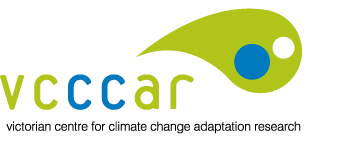The benefit of hindsight - Ben Preston

As a new year gets underway, it's worth reflecting on 2013 with the benefit of hindsight. One could argue that 2013 represented a turning point at which climate adaptation discourse began to converge with that of disaster risk management. For years, adaptation researchers and practitioners have been focused on addressing the risks of climate decades in the future. There are two problems with this: a) adequate motivation for adaptation can be found in the present, and b) few institutions, if any, exist solely for the purpose of managing climate risk.
In Victoria, 2013 was a notable year for extreme weather events. Melbourne experienced its hottest month on record in January and broke another record with a nine-day heatwave in March. The Harrietville Fire took the lives of two firefighters in Victoria in February. In May, Melbourne bore the brunt of a massive downpour. Much of what Victorians experienced was mirrored in other regions - the Yarnell Hill Fire in Arizona and Typhoon Haiyan in the Philippines being two examples. Meanwhile, by year's end, an estimated 27,000 households in the U.S Northeast displaced by Superstorm Sandy in 2012 had yet to return home. The past year also brought a range of industrial disasters in developed and developing nations that displaced entire communities and took thousands of lives. Such events reveal society’s fragility and the challenges we face right now in implementing effective risk management strategies. Increasingly during 2013, discussions of adaptation were integrated with discussions of preparedness, emergency management, robustness, reliability, and resilience. We can use common strategies to reduce societal vulnerability to a range of threats, both near-term and long-term, of which climate change is but one.
Those involved in adaptation research and practice this year will be challenged to generate value not only for the future, but also the present. Fortunately, Victorians now have a framework to support holistic thinking about risk: the Victorian Adaptation Plan. As with any plan, success will ultimately hinge on its implementation, and in this regard, the Victorian government will undoubtedly be looking for help. This will include collaboration and knowledge sharing among federal, state, and local government, the private sector, the research community and, more importantly, developing new mechanisms for increasing the effectiveness of such collaboration. As just one case-in-point, in March the IPCC will release the AR5 Working Group II report on the impacts of climate change, which will contain a significant expansion of the discussion of adaptation compared with prior reports. Making the insights that emerge from the AR5 useful for adaptation practitioners and policy-makers within Victoria will be an important task. Fortunately, VCCCAR is well-placed to assist in facilitating the development of place-based and policy-relevant knowledge on adaptation in conjunction with those that can put it to use.


